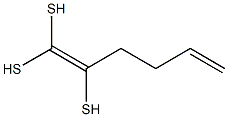PRODUCT Properties
| Melting point: | 48-49°C |
| Boiling point: | 866.9±65.0 °C(Predicted) |
| Density | 0.951±0.06 g/cm3(Predicted) |
| storage temp. | Amber Vial, -20°C Freezer, Under Inert Atmosphere |
| solubility | Chloroform: soluble |
| form | A crystalline solid |
| pka | 10.53±0.50(Predicted) |
| InChIKey | QNTNKSLOFHEFPK-UPTCCGCDSA-N |
| SMILES | C1(O)=C(OC)C(OC)=C(O)C(C)=C1C/C=C(\C)/CC/C=C(\C)/CC/C=C(\C)/CC/C=C(\C)/CC/C=C(\C)/CC/C=C(\C)/CC/C=C(\C)/CC/C=C(\C)/CC/C=C(\C)/CC/C=C(/C)\C |
Description and Uses
Ubiquinol is a reduced form of coenzyme Q10 (CoQ10; ), which exists in three redox states: fully oxidized (CoQ10/ubiquinone), partially reduced (semiquinone/ubisemiquinone), and fully reduced (ubiquinol). CoQ10 acts as an electron shuttle in the electron transport chain via its reduction to ubiquinol between mitochondrial complexes I and II, also known as NADH dehydrogenase and succinate dehydrogenase, respectively, and mitochondrial complex III, also known as cytochrome bc1 complex. CoQ10 is also reduced to ubiquinol by ferroptosis suppressor protein 1 (FSP1) with NADPH as a cofactor, and ubiquinol traps lipid peroxyl radicals and inhibits lipid peroxidation helping to prevent ferroptosis.
Reduced coenzyme Q for improving nervous system cell functions.
Safety
| HS Code | 2909500000 |



